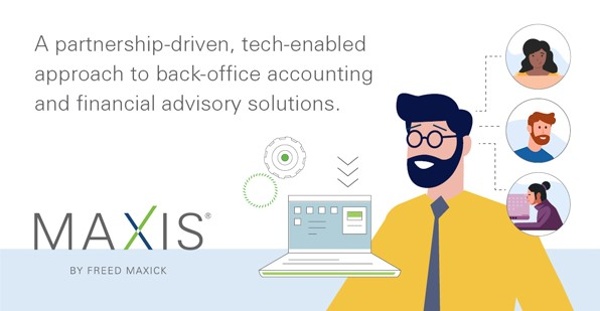Not-for-profit organizations must make MSP a priority
From the chair of the board to their newest volunteer, a not-for-profit (NFP) organization relies on people to promote its mission, expand its donor base, and serve its constituents. Core to its success are individuals who are so central to operations that it might be difficult, if not impossible, for the organization to function without them. For example, an organization might have a tenured officer who has served in various capacities for years and possesses a wealth of institutional knowledge. Or, a development professional who has built relationships within the community to increase awareness and donations.
Management Succession Planning (MSP) prepares the organization to seamlessly respond to the loss of key personnel. It involves identifying those individuals and creating roadmaps for action in the event any of those positions become vacant.
Investing in Management Succession Planning for Nonprofits
In the past, MSP meant choosing an heir apparent who could be groomed to take over for a CEO or executive director. Today, it encompasses a much broader approach. On one hand, MSP prepares the organization for how to handle the succession of a variety of key roles. On the other hand, it adapts the organization’s culture so that it never has to rely on a single person exclusively for knowledge or expertise. A good MSP includes setting up processes and procedures that will continue to function in the absence of said personnel.
Six Important Steps in a Management Succession Plan
There is no one-size-fits-all guide for MSP. Each organization has unique resources and needs. Your organization’s process and plan should reflect its specific circumstances, culture, and long-term goals. Of course, there are many common considerations for most succession plans:
1. Evaluate the organization’s current and prospective needs
Perhaps the best place to begin almost any succession plan is by looking at where your organization is currently and evaluating if it’s aligned with and on track to achieving its goals. MSP is an opportunity to assess the effectiveness of the status quo. Questions to ask might include:
- What issues might be interfering with the organization’s success in reaching set goals?
- Have we kept up with new technological developments?
- Are we in compliance with applicable laws or regulations?
- Do we have any potentially untapped resources among our staff?
- Could employees be given greater opportunities to further our mission?
2. Identify areas of vulnerability should turnover occur
Which roles are most important in your hierarchy? Who plays such a critical role that they could fairly be described as ‘indispensable’? Consider your leadership, employees, and even volunteers. MSP is not just about planning for how to replace those at the top, it’s also about preserving critical skills and knowledge. If losing a particular person would significantly impact your organization’s ability to function, then an appropriate plan should be in place if that individual was to be hit by the proverbial “bus”.
3. Analyze “bench strength”
Who among your current leadership or staff might be able to step into a critical role should the need arise? It is never too early to consider potential candidates for important positions. Ensure the existence of up-to-date job descriptions with performance expectations for mutual understanding, and make sure your stars are receiving the support they need for the long term.
4. Determine how best to fill essential roles
Once you understand where turnover could cause the most harm, begin to consider how you can adapt to personnel changes and guide retention. Identify potential candidates internally or consider developing cross-training and upskilling programs and possible advancement opportunities.
Consider ways to utilize technology to reduce the number of manual tasks that put a strain on resources. Place the organization's institutional knowledge into a process instead of a person. Technology can automate manual and repetitive tasks, like billing and payroll. For example, MAXIS® by Freed Maxick is a high-tech outsourced accounting solution. It uses the cloud to provide better accuracy, timeliness, accessibility, and security. And, it frees up talent to contribute proactively with their time and knowledge. With staffing challenges, doesn’t it make sense that you use them wisely? Automating also ensures more timely activity, preventing the possibility of delays in processing or payment.
5. Keep communication open
The steps described above may require conversations and stay interviews with your employees, volunteers, and others. This opens lines of communication that can be invaluable when a succession plan is being developed, as well as keeping them informed when a transition occurs.
6. Update your Management Succession Plan periodically
The succession plan reflects your organization’s needs and available assets at a particular moment in time. Circumstances will occur gradually or may change abruptly without warning. A routine review of your plan is needed to amend and address changes.
Expect the Unexpected
Not-for-profit organizations should focus their attention on serving their missions, along with administration and donor outreach. While yours might have a robust plan for evolving and promoting your mission and maintaining financial support, a plan for managing the loss of key individuals is equally as important.
It is far better to be prepared in advance than to have to scramble to fill a critical role. MAXIS® by Freed Maxick is one example of a service that grew from client need. MAXIS is a full-service outsourced accounting solution that integrates software, the cloud, and custom-created processes with dedicated, knowledgeable professionals. In lieu of relying on one full-time person to perform time-consuming menial, repetitive, transactional tasks, you receive a team of fractional outsourced financial resources providing expertise in many areas of accounting and financial advisory with increased internal controls and more stability.
To learn more about our resources for Management Succession Planning, contact Holly Hejmowski, Director of Assurance and Advisory Practice, directly at Holly.Hejmowski@FreedMaxick.com.

